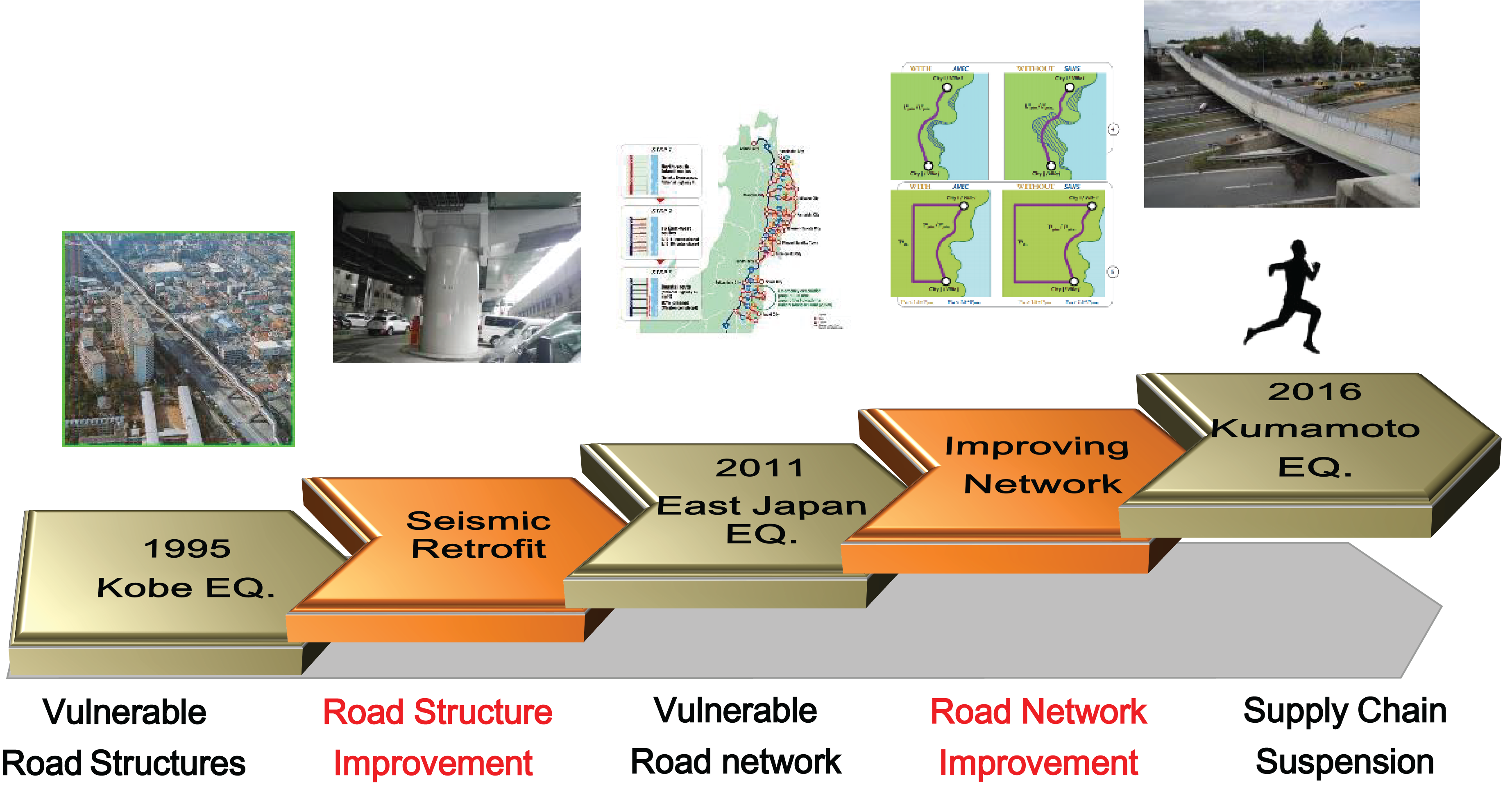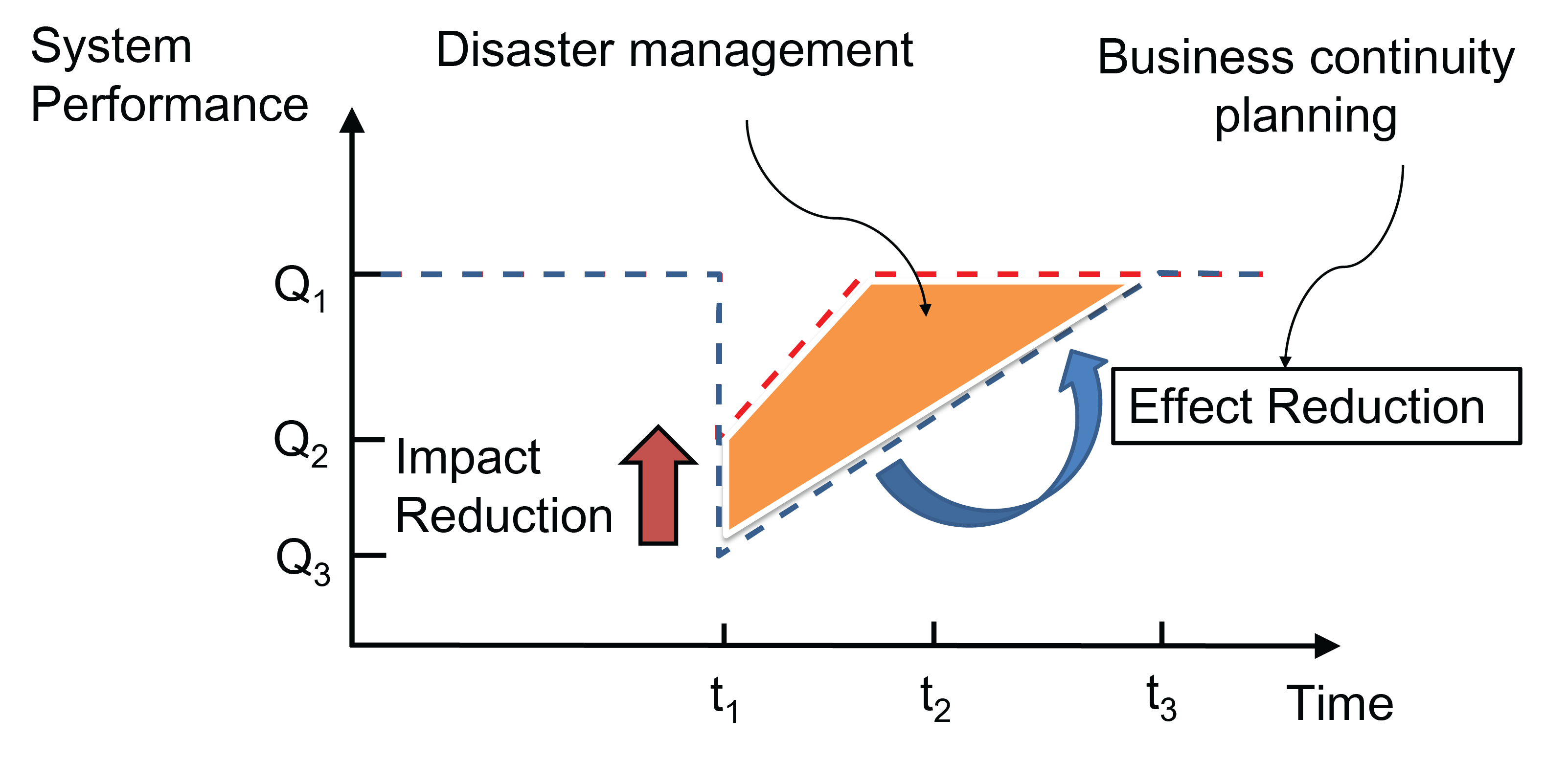
Disaster Management Manual
A manual for practitioners and decision makers!

Disaster Management Manual
A manual for practitioners and decision makers!
Many road administrators have traditionally developed "disaster prevention plans" as an activity to enhance road disaster preparedness. The main focus of this activity is to minimize human and property damage and to maintain roads structurally. On the other hand, in recent years, there has been a growing demand to maintain roads functionally, for example, to ensure the role of emergency transportation roads and to minimize the time of disruption of supply chains. Therefore, "business continuity planning," which focuses on securing road functions, is becoming increasingly important as an activity to further enhance road function disaster preparedness.
Figure 3.2-1. shows an illustration of the changes in stakeholder demands for earthquake disaster mitigation in Japan: in the 1990s, attention was focused on the seismic vulnerability of road structures, and around 2010 on the vulnerability of the road network, but in recent years, attention has shifted to the retention and continuity of road functions. In this way, it is clear that the expected role of roads in times of disaster has evolved over time.

Figure 3.2-2. shows the role of disaster management in dealing with the loss of road functions due to disasters. Table 3.2-1. also compares the characteristics of conventional disaster management plans and current business continuity plans. Disaster management can be roughly divided into two categories: mitigation of the disaster itself and mitigation of the impact of the disaster. Conventional disaster management plans focus on the former, while business continuity plans include the latter.

| Characteristics of conventional disaster prevention plans Minimization of human and physical damage | Characteristics of business continuity plans in recent years Further minimization of functional damage | |
|---|---|---|
| Goal | Ensure safety of human life | Continuation and early recovery of critical operations |
| Indicators | Number of casualties | Recovery time and recovery level |
The following is a summary of issues that should be considered when developing a business continuity plan:
When formulating a business continuity plan, it is important to plan according to a timeline that includes cooperation with related organizations that are capable of responding to all disasters and cooperating with each other, using scenarios that assume various types of disasters.
In the event of a disaster, it is important to cooperate with related parties beyond the scope of daily operations. It is important to identify the organizations and tasks involved in disaster response, and to build cooperative and collaborative relationships based on this information in advance.
When responding to a disaster, it is necessary for everyone from the task force to the staff working on the site to have the same goal in mind. In order to maintain this consistency of action, it is important to establish a system of command and order and to develop information management tools. In addition, it is essential to coordinate with related organizations so that actions can be taken in cooperation.
It is necessary to constantly assess risks and plan pre-, during, and post-response measures according to the risks. In addition, it is necessary to prepare a variety of precautionary measures along the timeline, such as early warning information, pre-event road closure, and pre-notice road closure, depending on the risk level.
It is important to plan for the rescue and protection of road users who are left stranded on the road during a disaster.
It is important to integrate elements of emergency management that are common to all hazard types and plan to fill in the gaps by complementing these common elements with unique individual elements specific to each hazard.
It is important to disseminate information on the road at all times and to build trust with road users. For this purpose, it is important to disseminate all kinds of information using all kinds of channels.
It is important to regularly review the business continuity plan using the latest risk information and to continuously improve the plan to ensure that it always addresses all risks.